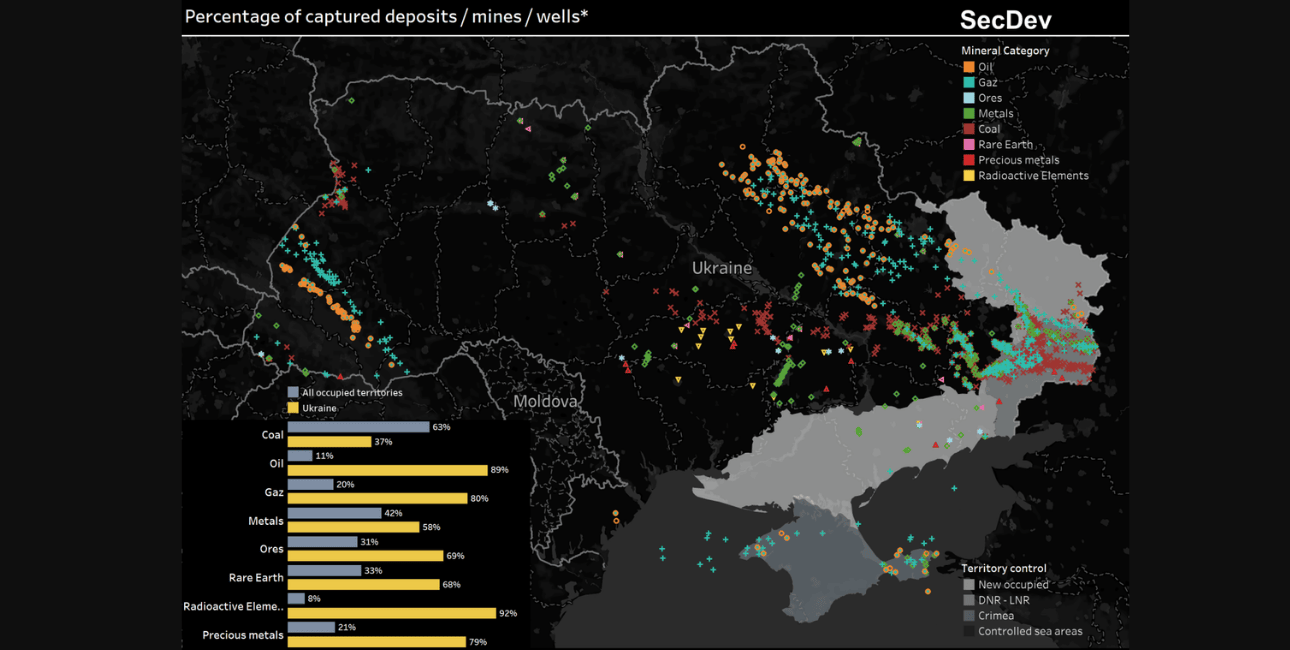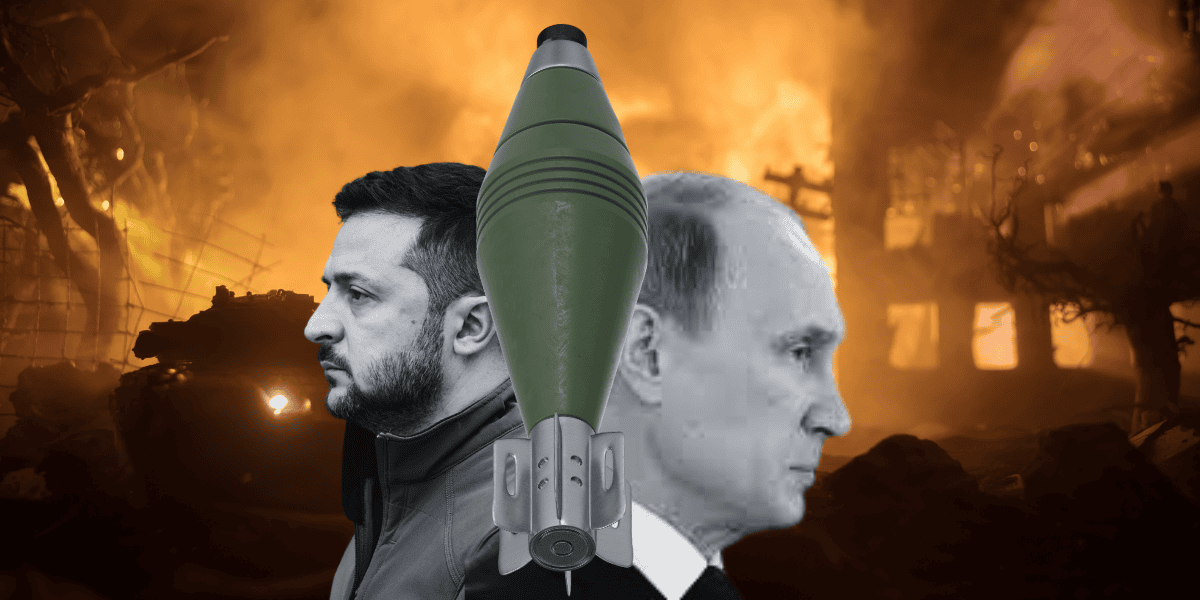US President Donald Trump is pushing for a deal to secure Ukraine’s rare earth minerals in return for American aid as Kyiv battles Russia. Ukrainian President Volodymyr Zelenskyy has reportedly responded positively to the proposal.
Trump, citing nearly US$300 billion in US support, emphasized the need for “equalization.” “Ukraine has very valuable rare earths,” he stated, hinting at a potential resource-for-aid arrangement.
“We’re looking to strike a deal where Ukraine secures what we’re giving them with their rare earths and other things,” he added, leaving the definition of “other things” ambiguous. “We’re going to stop that ridiculous war,” he added.
Zelenskyy, in response, signaled openness to “investment” from allies—so long as it strengthens Ukraine’s fight against Russia. He confirmed that discussions on rare earth minerals had started months ago. “I talked about this back in September when we met with President Trump,” he revealed.
Interestingly, Ukrainian media earlier suggested that the idea may have originated in Kyiv—not Washington—as a way to ensure continued US weapons supply. Reports indicate that Zelenskyy’s team even delayed a critical minerals deal with the Biden administration to use it as leverage if Trump returned to power.
However, there’s a major catch— recent reports suggest that Moscow has seized control of up to 70% of Ukraine’s mineral resources, with the richest deposits located in the occupied regions of Donetsk, Dnipropetrovsk, and Luhansk.
What’s Beneath Ukraine’s Soil?
What exactly does Ukraine have beneath its war-torn soil that has drawn global attention? A goldmine of critical minerals – making the country a potential powerhouse in the global raw materials market.

Ukraine is rich in critical minerals and rare earth elements essential for various modern technologies, including batteries, magnets, catalysts, and electronic components. These materials are crucial across sectors such as consumer electronics, healthcare, transportation, power generation, petroleum refining, and defense technologies.
The country is home to 20 critical minerals and metals, positioning it as one of the top 10 global suppliers with approximately 5% of the world’s total supply.
Among these are rare earth metals like titanium, lithium, beryllium, manganese, gallium, uranium, zirconium, graphite, apatite, fluorite, and nickel, according to the World Economic Forum.
As per ‘the Ministry of Ecology and Natural Resources of Ukraine’ –
Titanium: Ukraine leads Europe in titanium reserves and ranks among the top ten globally, producing 7% of the world’s supply. With 28 known fields, it also yields zirconium as a byproduct. The main titanium-containing minerals are ilmenite and rutile.
Lithium: Ukraine holds a third of Europe’s lithium reserves, representing nearly 3% of global supplies.
Graphite: Ukraine possesses 20% of the world’s graphite resources, with reserves of around 19 million tons of ore containing 5-8% natural graphite. The country is one of the top five global reserves holders.
Nickel & Cobalt: Ukraine is home to 12 silicate nickel fields, which also contain cobalt as a byproduct. The country’s cobalt reserves are estimated at up to 9,000 tons. However, Ukraine’s Pobuzhsky ferronickel plant still relies on importing nickel and cobalt raw materials for its industrial needs.
Rare Earth Elements: Ukraine also has deposits of rare earth metals like tantalum, niobium, and beryllium. Six fields are known to contain these metals, with non-commercial extraction carried out alongside titanium mining.
Ukraine also has significant deposits of copper (4th in Europe), lead (5th), zinc (6th), and silver (9th), according to the Finance Ministry.
For instance, Ukraine’s discovered lithium and graphite reserves are sufficient to produce cathode and anode materials for lithium batteries, with a total capacity of 1,000 GWh, enough to support the production of approximately 20 million electric vehicles.
Ukraine’s critical materials are valued at US$12 trillion, based on estimates that highlight the potential to expand the global market for raw materials. If we include other natural resources like coal and natural gas, this figure rises to US$26 trillion.
According to the Kyiv School of Economics (KSE), Ukraine’s rare earth deposits are mainly concentrated in the central regions. However, they remain largely underdeveloped, and their total value remains undetermined.

Thus, the US$12 trillion estimate, presented at the Davos forum last month, should be viewed with caution. A significant portion of these reserves is unexplored, and the quality and quantity of the resources are still speculative.
The full extent and viability of Ukraine’s critical materials remain unclear, and further exploration is needed to assess their true potential.
Russia-Occupied Minerals
Russia has seized control of up to 70% of Ukraine’s mineral resources, with the highest concentrations located in the Donetsk, Dnipropetrovsk, and Luhansk regions. These resources are valued at approximately US$15 trillion, according to Forbes Ukraine.
A recent report by ‘The Moscow Times‘ cites an April 2023 Forbes Ukraine estimate of Ukraine’s total mineral resources at 111 billion tons, valued at US$14.8 trillion, primarily consisting of coal and iron ore.
However, more than 70% of these resources are located in Donetsk and Luhansk—regions partially controlled by Russia—as well as in Dnipropetrovsk, where Russian forces are advancing.
A 2022 report from The Washington Post placed the value of Ukraine’s mineral reserves much higher, estimating them at US$26 trillion—almost half of which is in areas now under Russian control.
US-China-Russia: Competition Over Critical Minerals
Trump’s proposal isn’t just about Ukraine—it’s about countering China and Russia.
Ukraine is the world’s fifth-largest producer of gallium—essential for semiconductors and LEDs—and a key supplier of neon gas, providing 90% of the US chip industry’s needs. Russia’s full-scale invasion triggered a global neon shortage, disrupting US chip manufacturing.
The country also holds deposits vital to the nuclear industry, including 1% of global zirconium production and significant beryllium and uranium reserves. Beryllium is crucial for nuclear power, aerospace, military, acoustic, and electronic industries, while uranium remains essential for both nuclear energy and defense applications.
US President Donald Trump’s interest in Ukraine’s critical materials is likely driven by China’s dominance in the rare earth market. As of January last year, China accounted for 60% of global rare earth production and processed about 90%, according to the Center for Strategic and International Studies. Under his “America First” policy, Trump sought to boost US competitiveness by reducing dependence on Beijing.
Meanwhile, Russia, a major supplier of titanium, nickel, and platinum group metals, has also felt the impact of Western sanctions. These restrictions have worsened global shortages of critical materials like titanium, which is vital for the aerospace and electronics industries.
Future Implications
The global critical minerals market, currently valued at US$320 billion, is expected to double in the next five years, according to the World Economic Forum.
Before 2022, Ukraine was a major supplier of steel plates, titanium, lithium, gallium, iron ore, and manganese to Europe. However, the Russian invasion severely disrupted these supply routes, forcing reliance on more expensive and slower rail alternatives.
Thus, the battle for Ukraine’s mineral resources represents more than just territorial control; it’s a crucial factor in global technology supply chains and geopolitical power dynamics.
- Shubhangi Palve is a defense and aerospace journalist. Before joining the EurAsian Times, she worked for ET Prime. She has over 15 years of extensive experience in the media industry, spanning print, electronic, and online domains.
- Contact the author at shubhapalve (at) gmail.com




